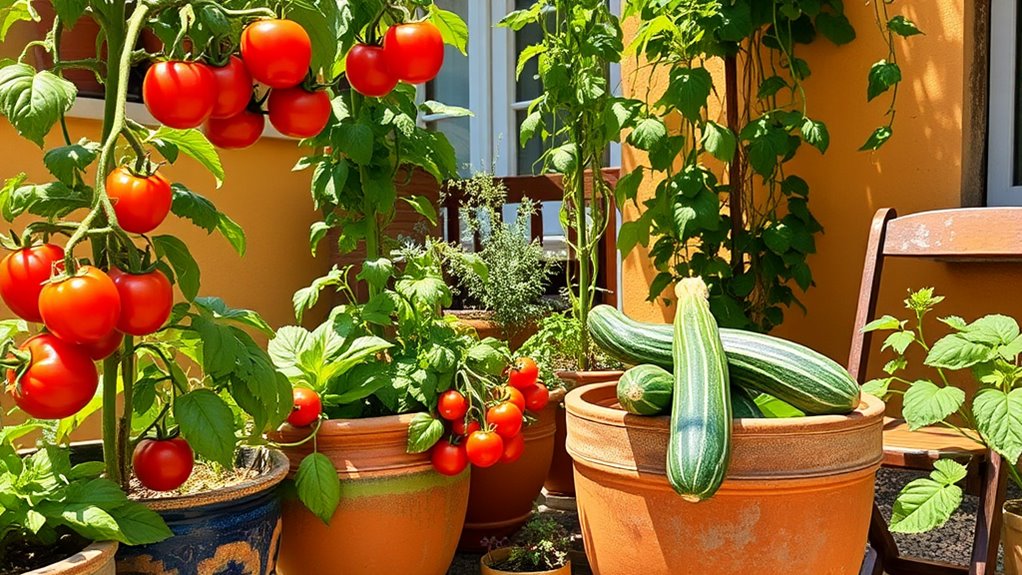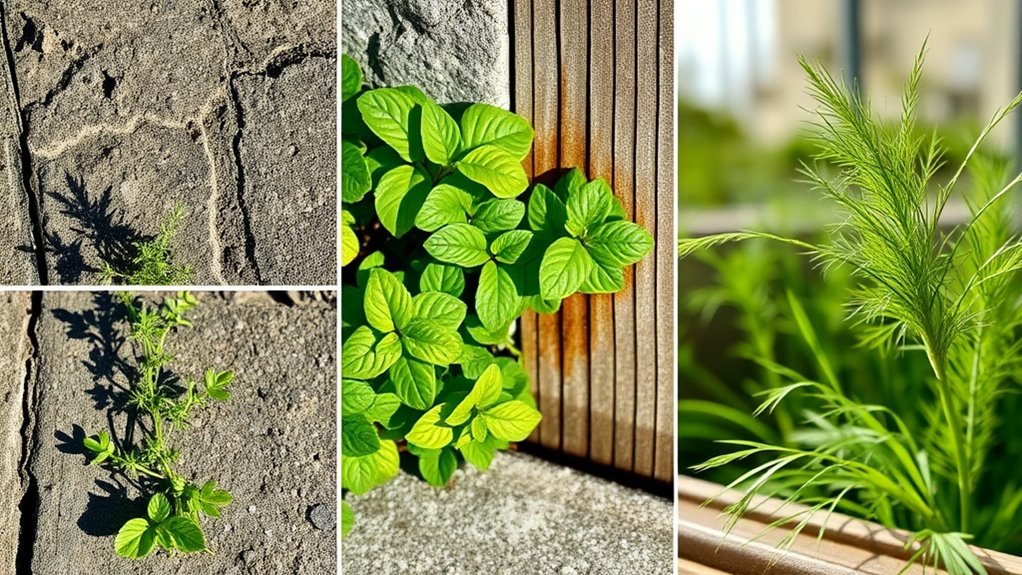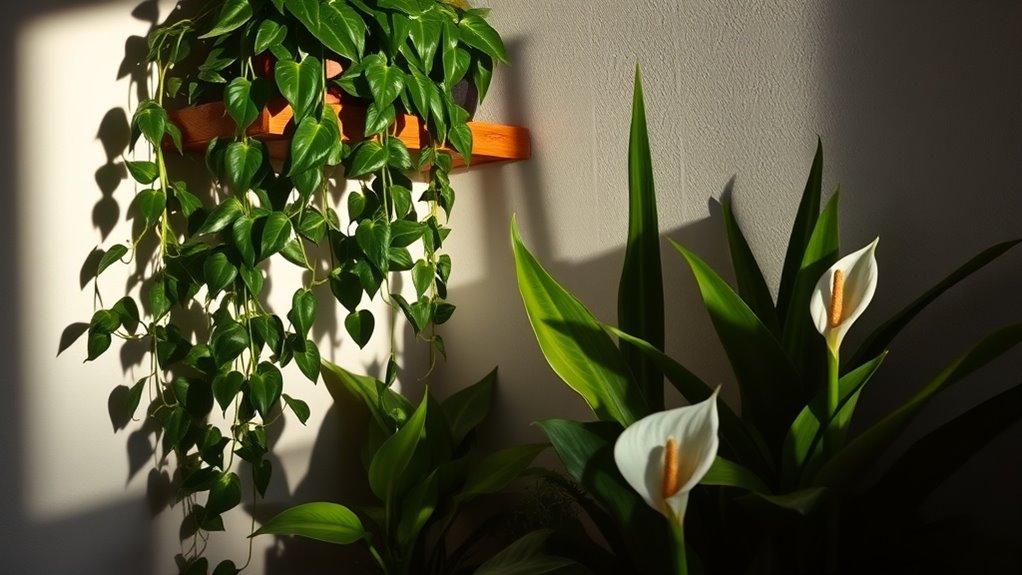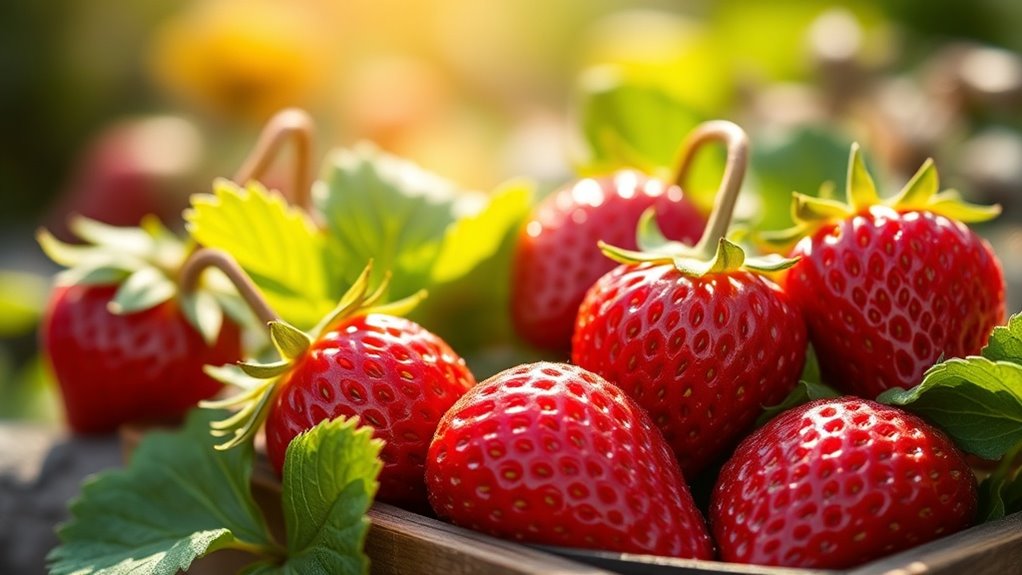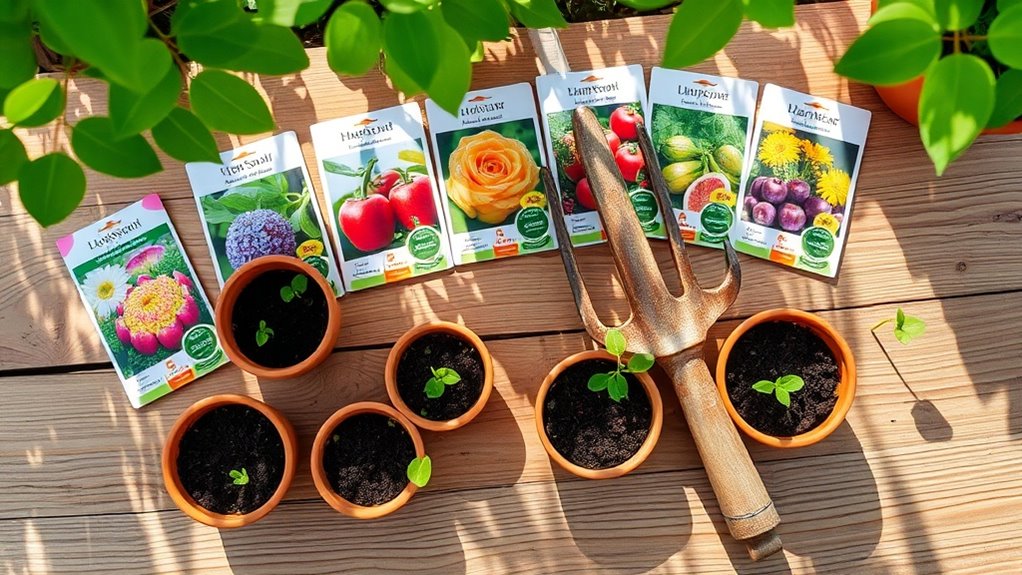The Lazy Gardener’s Guide to Container Vegetables
Think of container gardening as your personal oasis amidst the chaos of life. You don’t need a sprawling yard to grow fresh vegetables; with the right containers and care, even a balcony can flourish. Selecting the proper vegetables and understanding soil requirements is crucial. As you discover practical techniques for watering and maintaining your garden, you’ll find that cultivating fresh produce can be effortlessly rewarding. What’s the simplest method to ensure your plants thrive?
Choosing the Right Containers
When selecting containers for growing vegetables, consider at least three key factors: size, material, and drainage.
Choose larger containers for easy container vegetables, as they provide ample space for root growth.
Materials like plastic and ceramic retain moisture differently, affecting your plants.
Lastly, ensure adequate drainage holes to prevent waterlogging, which can lead to root rot and hinder your vegetable yields. Additionally, container size plays a crucial role in the overall health of your plants, as it directly impacts their growth potential and access to nutrients.
Best Vegetables for Container Gardening
Selecting the best vegetables for container gardening can significantly enhance your gardening experience and yield.
Opt for compact varieties like cherry tomatoes, dwarf peppers, and bush beans; they thrive in limited space. Leafy greens, such as lettuce and spinach, also perform well.
Additionally, root vegetables like radishes and baby carrots can develop nicely in containers, making your garden diverse and fruitful. You might also consider easy-to-grow vegetables that thrive in buckets, providing more options for your limited gardening space.
Soil Selection and Preparation
A quality soil mix is essential for successful container gardening, as it directly influences plant health and growth.
Use a blend of potting soil, compost, and perlite to ensure excellent drainage and aeration. Aim for a mix that retains moisture without becoming compacted.
Always check for pH levels between 6.0 to 7.0, ensuring optimal nutrient availability for your vegetables. Additionally, incorporating essential soil ingredients can further enhance the nutrient profile and support robust plant development.
Planting and Care Tips
To ensure your container vegetables thrive, it’s crucial to follow specific planting and care techniques right from the start.
-
Choose the right size container for each vegetable.
-
Use high-quality potting mix with proper drainage.
-
Space seeds or seedlings adequately to promote air circulation.
These practices will support robust growth and prevent potential issues that can hinder your container vegetable garden’s productivity. Additionally, incorporating practices like bucket gardening can help maximize yield in limited spaces.
Watering Techniques for Success
Successful container gardening relies heavily on effective watering techniques, and understanding the moisture requirements of your vegetables is essential.
Water deeply but infrequently to encourage root growth. Check the top inch of soil; if it’s dry, it’s time to water.
Invest in self-watering containers or use moisture meters to maintain optimal hydration, ensuring your vegetables thrive without constant monitoring. Additionally, consider the ideal watering schedule to maximize the health and yield of your container plants.
Harvesting Your Container Garden
Timing plays a crucial role when it comes to harvesting your container garden.
You want to pick your vegetables at their peak ripeness for the best flavor and nutrition.
Watch for signs of readiness and use the following guidelines:
-
Check color and size for optimal freshness.
-
Test firmness to gauge ripeness.
-
Harvest in the morning for maximum taste.
Additionally, certain crops, like basil and tomatoes, are particularly responsive in flavor when harvested at just the right time.

